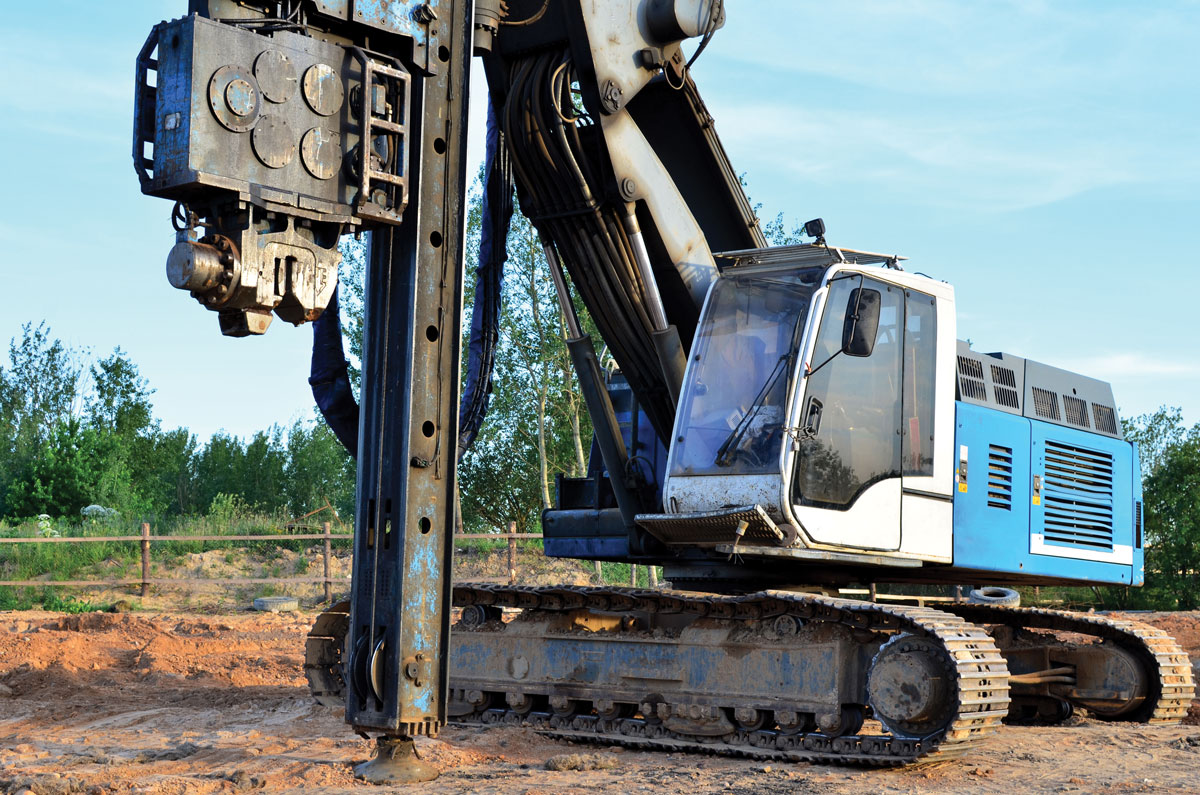
Photo: maximsafaniuk/123RF
With the continuous and increasing demand for new infrastructure and challenging projects, the global construction and infrastructure industry is paced to grow approximately 57 per cent by 2030, and is estimated to reach approximately US$15.5 trillion over the period according to the Global Construction Report 2030. Also, the piling machine and heavy construction industries are expected to see exponential growth in upcoming years. This will demand more complex work practices, stringent construction planning and safety requirements for any successful project in the coming years.
Most geotechnical project work consists of limited access to sound ground conditions, constraint site access, environmentally sensitive areas, and short construction schedules due to high demand and fast progress. The geotechnical and foundation structures are an integral and important part of any project structure. In the past, less importance was given to foundation constructions, resulting in negligence and a significant cost to clients and to contractors. The tilting of the Millennium Tower in San Francisco can be considered a good example of negligence to proper ground assessment and suitable foundation work. Efficient and effective management throughout project duration is a vital point for any successful foundation project, and can lead to the overall success of the entire project.
Considering the risk associated and recent success with the deep foundation structures of any large infrastructure project, the Engineering Procurement & Construction (EPC)/design-build method is becoming the primary selection for clients and stakeholders. The following key points can be considered for the efficient construction of any foundation construction.
Bid phase
For any project execution, the bid phase plays a significant role in determining the overall planning of the project. Pre-geotechnical assessment and tests, site assessment, geological survey and a preliminary deep foundation system design should be followed to execute a sound technical proposal and direct/indirect cost associated with the whole project phase. It is shown that pre-geotechnical testing and geotechnical baseline reports can reduce significant construction costs with optimization of the correct deep foundation system. This will determine the correct approach to procure the required tools and equipment, and proper planning for construction. Risk and probabilistic approaches can be adapted to determine the correct foundation system and proper geotechnical stratigraphy in the bid phase itself.
Design-engineering phase
With sparse and limited geotechnical data available at first, a fair amount of engineering and desktop study of the geotechnical report should be considered for efficient design of the foundation. Proper knowledge of available construction tools, rig diameter and access/restrictions to the construction site can play a primary role in the design of a deep foundation system. Using modern finite element analysis and 3D soil dynamics modelling, one can achieve design optimization and value engineering for the project.
Pre-construction phase
This is an important phase of any project as proper planning can make a difference to overall project execution. This phase includes a dedicated selection of plant, equipment, spares, manpower, creation of construction forms and templates, demonstration of tools, maintenance plans and safety/operation training for the team. Proper planning and execution before construction can significantly eliminate hidden risk elements.
Construction phase
Deep foundation construction can be optimized by adopting new technologies, proper time and tool management, and mitigation of risk elements. Construction activities include site assessment, determination of structure location, transportation of the correct tools, materials and manpower, setting up the plant and equipment, executing construction with proper planning, maintenance of tools and construction completion. A cooperative effort between all stakeholders is needed to plan for these activities properly. Safety discussions prior to commencing construction can drastically reduce work-related injuries and create a safe work environment.
With the design-build approach, the risk associated with as-built construction and design changes can be eliminated with a quick redesign check of the encountered geotechnical conditions by the in-house engineering design team. Training of construction workers and hiring the correct person to manage construction projects can play a different role in efficient project completion, and it helps in the execution of load tests and geotechnical exploration under proper supervision and accuracy.
Post-construction phase
This phase plays an important role in successful project execution. It includes completion of construction, site clearance, demobilizing tools and equipment, data collection of load tests, and concrete/grout/soil sample collection and testing. For large EPC projects like transmission line construction, data collection of each structure and the creation of a geographical database can help track project work and serve as one platform for repairing, maintenance and expansion of each structure. A completion/compliance report with detailed information like structure type, foundation parameters, material specification, as-built dimensions and as-built changes should be submitted for proper documentation by the contractor.
In conclusion, proper planning and management can play a significant role in an efficient foundation project. Every foundation project should be considered the first step to an overall successful project and should be executed with all mitigation strategies in both performance and production. ![]()